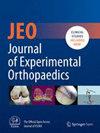Robotic-assisted total knee arthroplasty (RA-TKA) has gained popularity for its potential ability to improve surgical precision and patient outcomes, despite concerns about its long learning curve and increased operative times. The aim of this study is to evaluate the learning curve of the ROSA® Knee System, the relationship between each phase of the learning curve and the accuracy of the robotic system in femoral component size and knee alignment prediction.
A single surgeon retrospective analysis of total operative time (TOT) and total robotic time was conducted. The first 60 cases of RA-TKA performed between July 2023 and March 2024 were included. Six (10%) patients were excluded due to incomplete surgical reports. A cumulative sum analysis was used to identify the learning and proficiency phases of the surgeon's learning curve. Moreover, femoral component size prediction accuracy and the difference between planned and achieved knee alignment were analyzed.
The projected learning curve showed a significant reduction in TOT after 10 cases, with mean time decreasing from 62.6 ± 7.92 min in the learning phase to 49.9 ± 8.10 min in the proficiency phase (p = 0.0008). The robotic procedure accounted for 48% and 42% of the TOT in the learning and proficiency phases, respectively. Prediction in femoral component size was accurate in 92.6% of cases. The difference between planned and achieved knee alignment was not statistically significant (1.1° ± 0.9°).
The ROSA® Knee System allows a rapid learning curve in RA-TKA, with a significant reduction in operative time after the first 10 cases. An experienced orthopaedic surgeon specialized in knee arthroplasty can quickly reach a proficiency phase, maintaining high accuracy in alignment and femoral component sizing. These findings suggest that the ROSA® system is an effective and reliable tool for CR RA-TKA, offering precise and reproducible outcomes.
IV.



